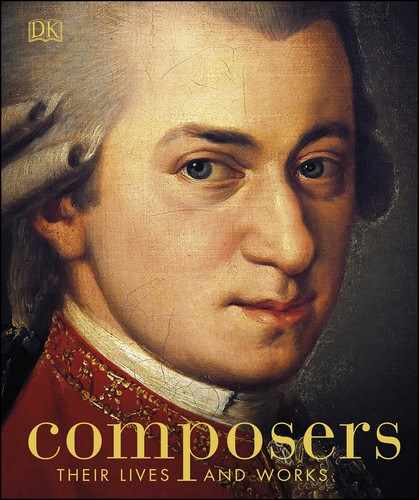Joaquín Rodrigo
1901–1999, SPANISH
Blind from childhood, Rodrigo is best known for the enormously popular Concierto de Aranjuez, which established his international reputation, and also brought respect for the guitar as a concert instrument.

JOAQUIN RODRIGO
The Spanish composer stepped into the international limelight following the premiere of his Concierto de Aranjuez in 1940. The work’s melancholy Adagio is believed to have been prompted by the tragic stillbirth of his first child.
IN CONTEXT
Commissioned concertos
The Concierto de Aranjuez was written by Rodrigo for the Spanish guitarist Regino Sáinz de la Maza. Its success prompted other virtuoso soloists to approach him with commissions. He also arranged the work for Spanish harpist Nicanor Zabaleta, who later commissioned the Concierto serenata for harp and orchestra from him.
Other of Rodrigo’s commissioned works include the Concierto como un divertimento for cello for Julian Lloyd Webber; the Concierto pastoral for flute for James Galway; the Concierto Andaluz for the Romeros Guitar Quartet; and the popular Fantasía para un gentilhombre for the guitarist Andrés Segovia.
Joaquín Rodrigo was born in Sagunto on St. Cecilia’s day, November 22, 1901. When he was only three years old, he was one of many children in the town who contracted diphtheria, which left him permanently blind. Soon after, the family moved to Valencia, where Joaquín attended school for the blind, and took his first music lessons on the piano and violin at the age of eight.
As a teenager, he had lessons in music theory with teachers from the Valencia Conservatoire, and began to take an interest in composition, using the braille system of musical notation to write his music, which he then dictated to a copyist, Rafael Ibáñez. Employed by the family as Joaquin’s assistant, Ibáñez shared Rodrigo’s love of music and literature and became his constant companion as well as amanuensis and secretary.
“ In life you can never be first in anything … I only aspire to be an improved Joaquín Rodrigo. ”
JOAQUIN RODRIGO

VICTORIA AND JOAQUIN RODRIGO
Joaquín met Victoria Kamhi during his European travels; they married in 1933. She became his indispensable partner, both emotionally and professionally.
A vibrant new world
By the mid-1920s, Rodrigo’s music was being performed in Valencia and Madrid. In 1927, he left Spain with Ibáñez for Paris, to study under the composer Paul Dukas at the Ecole Normale de Musique. Here, he was also introduced to the vibrant Parisian literary and musical culture, and met the composer Manuel de Falla, who became a lifelong friend, mentor, and champion of his work.
After studying musicology at the Paris Conservatoire and the Sorbonne, Rodrigo traveled around Europe in the 1930s, composing and performing as a concert pianist. It was then that he met Turkish pianist Victoria Kamhi, whom he married in 1933. In 1941, they had a daughter, Cecilia, named after the patron saint of musicians.
Rodrigo was absent from Spain during the Spanish Civil War (1936–1939); in 1939, he and Victoria were living in Paris. But, aware of impending conflict in Europe, they moved to Madrid before World War II began. Rodrigo took with him the Concierto de Aranjuez for guitar and orchestra, which he had written in Paris and that secured his international reputation.

CONCIERTO DE ARANJUEZ
This is a braille manuscript for Rodrigo’s Concierto de Aranjuez. He wrote all his music in braille, which was then transcribed into standard notation.
Prominent composer
Thereafter, he became a prominent member of the musical establishment, head of music broadcasts for Spanish radio, professor of the history of music at the Complutense University of Madrid, and music critic for national newspapers. He continued to write music, including 11 concertos and orchestral and chamber works, but none of his subsequent compositions achieved the same degree of popular acclaim as the Concierto de Aranjuez.
Victoria died in 1997, and Rodrigo died two years later, aged 97. They were buried together in the cemetery at Aranjuez, in the south of Madrid.

GARDENS, PALACE OF ARANJUEZ
The Palace of Aranjuez, near Madrid, was built by Philip II of Spain in the second half of 16th century. Its stunning gardens were the inspiration for Rodrigo’s masterpiece, the Concierto de Aranjuez.
